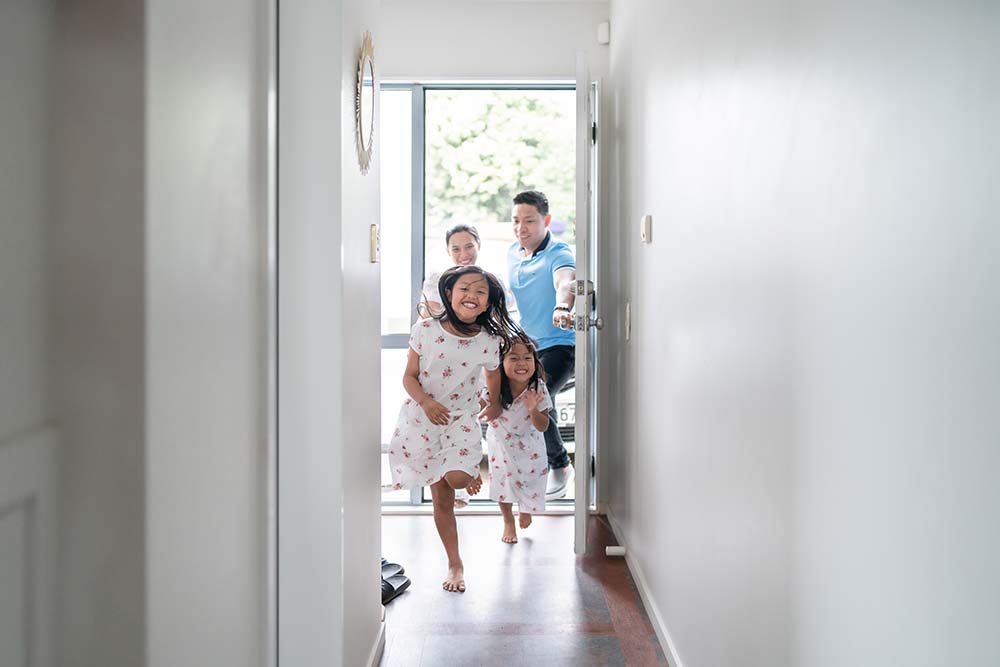
- Details
- By BOK Financial
Section 184 loans lower some mortgage requirements but credit still may be a challenge
Native Americans have a lower homeownership rate than other U.S. ethnic groups—but a federal program is working to change that.
Only 54.2% of American Indians and Alaska Natives owned a home in 2020, compared to 71.3% of non-Hispanic white Americans. However, the Section 184 Indian Home Loan Guarantee Program is aimed to make homeownership easier for Native Americans and to increase Native American communities’ access to capital.
Loans through the Section 184 program require a low minimum down payment—generally 2.25%, or as low as 1.25% for loans less than $50,000. By comparison, Federal Housing Administration (FHA) loan applicants with a FICO score of 580 or higher need a minimum down payment of 3.5%, while those with FICO scores between 500 and 579 need a 10% down payment.
“If you do that math, it makes a pretty big difference,” said Karen Heston, senior mortgage banker with BOK Financial Mortgage in Oklahoma. The program enables Native Americans to buy a house—and spend relatively little money out of pocket to do so, she said.
Section 184 home mortgage loans were originally designed to be used only on tribal trust land, but the program has now grown to also include other eligible areas. Currently, they are fully available in 24 states, including Oklahoma, Arizona, Colorado and New Mexico. In 14 states, including Texas, Missouri and Arkansas, the loans are only available in certain counties and cities. A full list of approved lending areas is available on the HUD website. To qualify, you must be an American Indian or Alaska Native who is a member of a federally recognized tribe.
BOK Financial® is one of only a few lenders able to accelerate the process by approving Section 184 loans on behalf of HUD, rather than sending paperwork to HUD for approval.
Misconceptions about Section 184 loans persist
Some who ask for the Section 184 loans don’t fully understand how they work, experts say. For instance, one common misconception is that the program provides down payment assistance, which it does not. The program does lower the amount of down payment required, but it does not provide money for the down payment. That said, help is sometimes available from tribes and states which offer down payment assistance. In these cases, the assistance can be used in conjunction with the Section 184 program.
Another misconception is that the loans can be obtained even with bad credit.
“It says in the federal guidelines that there’s not a minimum credit score, which is a little bit deceiving because HUD is also super picky about derogatory credit,” Heston said. The program’s written guidelines require a debt-to-income ratio of no more than 41%. BOK Financial requires a minimum credit score of 620.
“This product is really looking for people who handle their credit in a timely fashion,” said Terry Teel, a mortgage banker with BOK Financial Mortgage in the Oklahoma market. “If you have marginal credit and collections, that's when it becomes a problem with this type of loan.”
As a first step, applicants should meet with a mortgage banker to find out if they qualify and, if not, what they can do to fix that. Maintaining stable employment, avoiding new debts, paying down the current debts and saving money can all help you qualify in the future if you don’t now, explained Elvira M-Duran, a mortgage banker with BOK Financial Mortgage in New Mexico.
Even with the challenging credit requirements, experts agree that the program is a huge boost for Native American homebuyers.
“It's just a fabulous product because the mortgage insurance is so low compared to an FHA loan. Then, you can piggyback it with down payment or closing cost assistance from the tribe,” Teel said. “It just really helps a qualifying client get into a home for a reasonable amount of money.”
Help us defend tribal sovereignty.
At Native News Online, our mission is rooted in telling the stories that strengthen sovereignty and uplift Indigenous voices — not just at year’s end, but every single day.
Because of your generosity last year, we were able to keep our reporters on the ground in tribal communities, at national gatherings and in the halls of Congress — covering the issues that matter most to Indian Country: sovereignty, culture, education, health and economic opportunity.
That support sustained us through a tough year in 2025. Now, as we look to the year ahead, we need your help right now to ensure warrior journalism remains strong — reporting that defends tribal sovereignty, amplifies Native truth, and holds power accountable.
 The stakes couldn't be higher. Your support keeps Native voices heard, Native stories told and Native sovereignty defended.
The stakes couldn't be higher. Your support keeps Native voices heard, Native stories told and Native sovereignty defended.
Stand with Warrior Journalism today.
Levi Rickert (Potawatomi), Editor & Publisher
